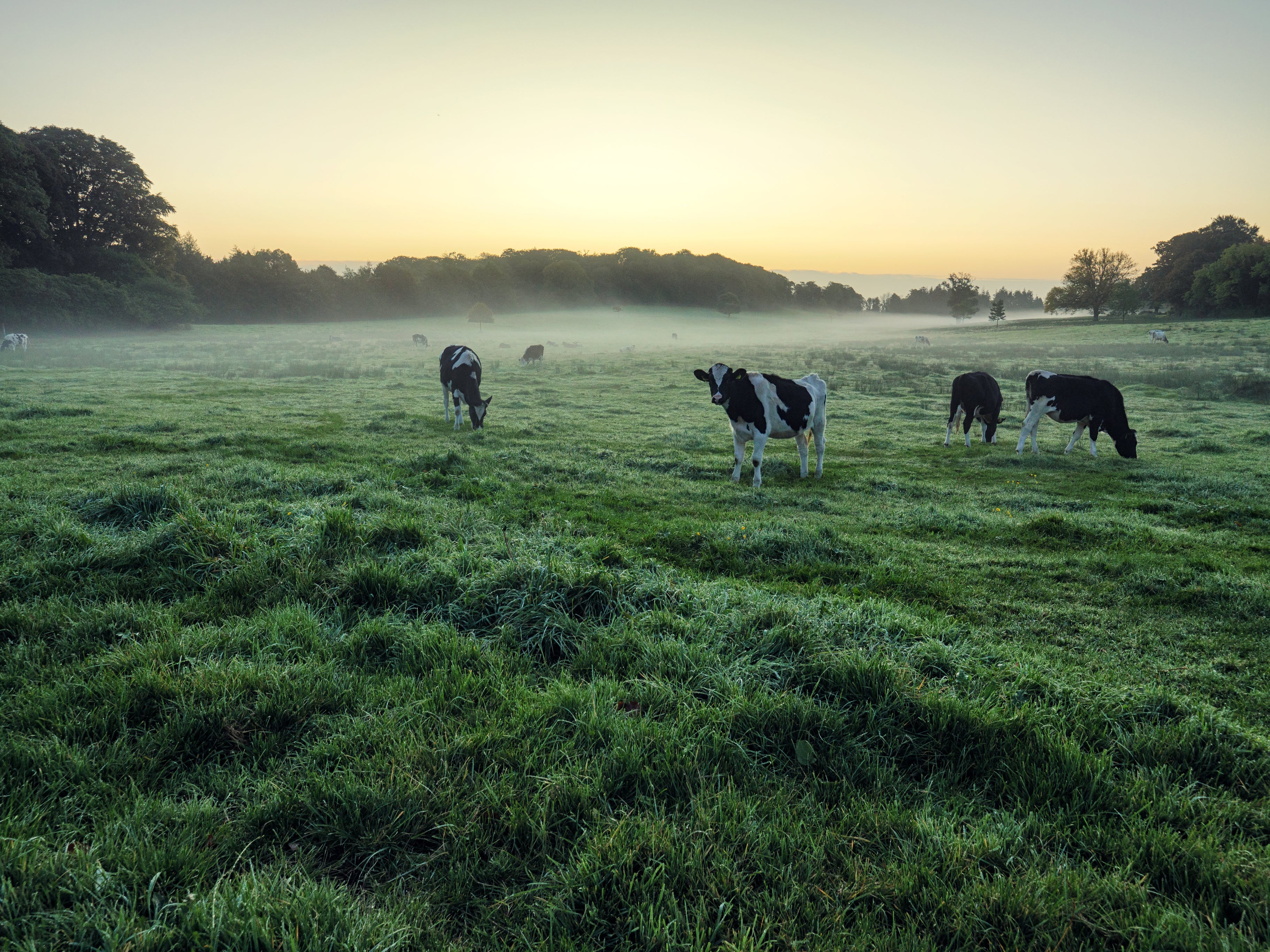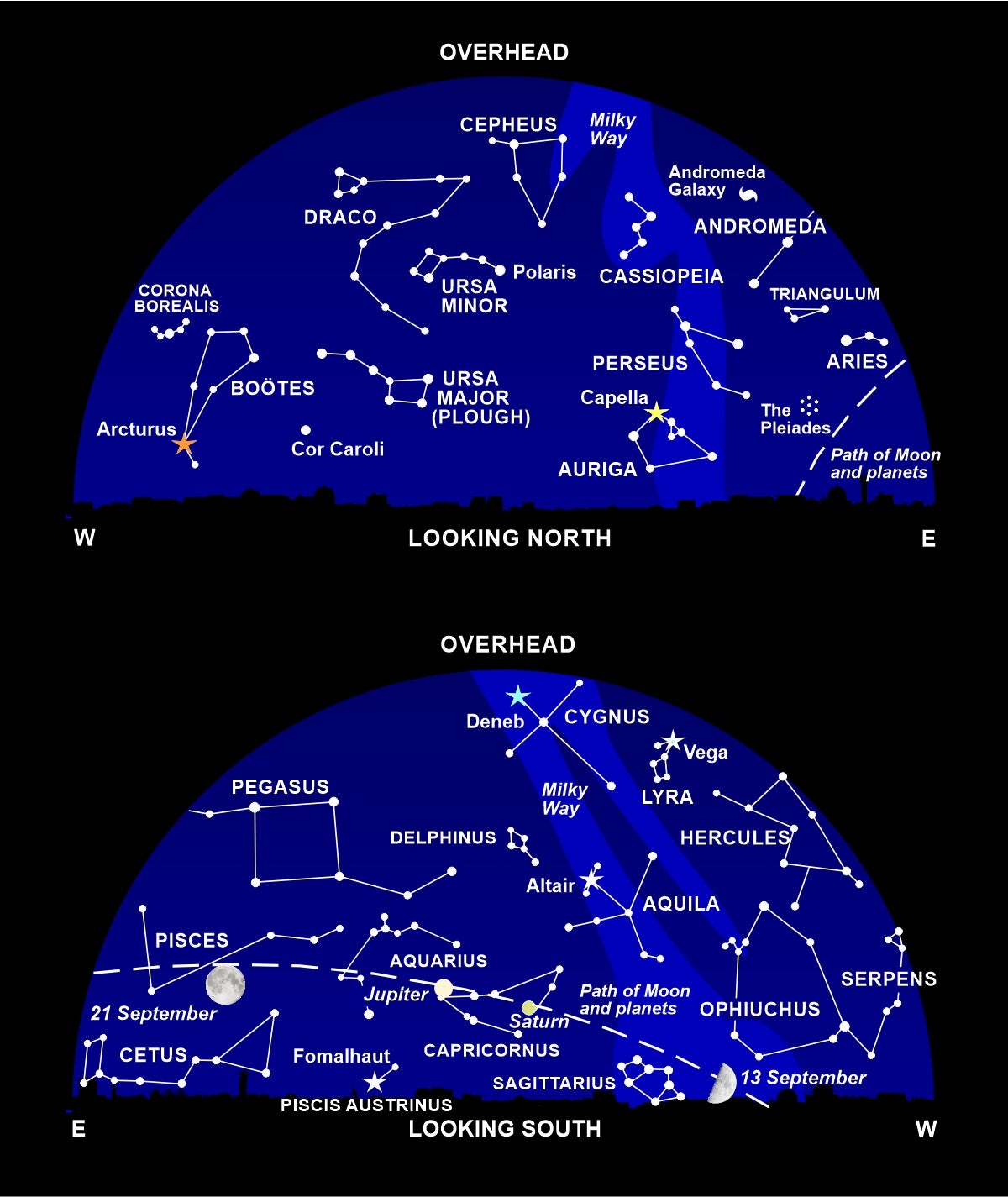Stargazing in September: The autumn equinox is upon us
Astronomers are among those who celebrate the change of seasons, as there’s more time to observe the wonders of the night sky, writes Nigel Henbest

This month sees a turning point in both the heavens and the Earth below. On 22 September, the Sun slips south of the Earth’s equator. The northern hemisphere tips from the summer half of the year to winter: long leisurely daylight hours of sunbathing give way to protracted cold nights huddled in front of the fire.
Astronomers are among those who celebrate the change of seasons, as there’s more time to observe the wonders of the night sky. And they’ve given this handover date a name: the autumn equinox. The corresponding date in March, when the Sun moves back north of the equator is the spring equinox – or vernal equinox, from the Latin for “spring”. The word equinox itself is Latin, meaning “equal night”, because – on this halfway date between midsummer and midwinter – the day and night are both exactly 12 hours long.
Or are they?
Let’s look at actual sunrise and sunset times. That depends a lot on where you live, so I’ve selected the village of Dunsop Bridge in Lancashire, which the Ordnance Survey says is the centre of Great Britain. On 22 September, sunrise occurs at 6.55 am, and sunset at 7.08 pm. Do a quick sum, and you’ll discover the day length is 12 hours and 13 minutes, and the night is 11 hours 47 minutes long. So much for equal day and night!
The size of the Sun’s beaming face is one reason for this discrepancy. What astronomers define as the Sun’s position is the location of its centre. When the Sun’s midpoint rises, half of its face is already above the horizon, and for most of us that means sunrise has already happened.
Our atmosphere comes into the fray, too, acting like a giant lens. As the Sun’s rays whizz through the air, they are bent by refraction, so the Sun appears higher in the sky than it otherwise would. The effect is surprisingly large, raising the Sun by more than its own diameter. Think of the newly-risen Sun sitting on the horizon; if you could strip away the Earth’s atmosphere you wouldn’t see it at all, because the Sun is actually still below the horizon.
Both these effects mean we get more than 12 hours of sunshine on the day of the equinox. However, there is a day when daytime and night-time are equal, sometimes called the “equilux” (meaning “equal light”). It occurs a few days after the equinox, and this year for Dunsop Bridge it’s 25 September.
You can find sunrise and sunset times for your own location from a number of websites, such as www.timeanddate.com/sun. But be prepared for the Sun to flaunt the predictions yet again, unless you have an absolutely flat horizon. If you’re surrounded by hills, mountains, trees or buildings the Sun will take extra time to clear them in the morning, and disappear behind them earlier than predicted in the evening.
What’s up
Like a lantern hanging in the gloaming, the Evening Star shines in the south-west after sunset. In reality, this ‘star’ is our neighbour planet Venus. There’s a lovely sight on 9 and 10 September when Venus is joined by the crescent Moon. To the lower right of Venus, and best seen in binoculars, you may spot the innermost of the planets, tiny Mercury.
After the sky grows dark, the night is dominated by brilliant Jupiter, the colossus of the Solar System, and its fainter sidekick Saturn. The Moon pairs up with Saturn on 16 September, and passes near Jupiter on 17 and 18 September.

The two giant planets are currently in a region of faint stars, outlining dim constellations that it takes a bit of time to get acquainted with. Jupiter and Saturn lie either side of the ancient constellation Capricornus. It takes a bit of imagination to see this distorted triangle as the traditional figure of a Sea-Goat – a mythical creature with a goat’s head and a fish’s tail.
The stars to the upper left of Jupiter form the torso of Aquarius, the Water-Carrier. He’s pouring a stream of liquid that appears as a cascade of stars passing Jupiter to drop down to the star Fomalhaut, marking the mouth of the Southern Fish (Piscis Austrinus).
Turning round to face the opposite direction, you’ll see the familiar seven stars of the Plough low in the north, between bright orange Arcturus to the left and yellow Capella on the right. Higher up, look out for the distinctive W-shape of stars depicting Queen Cassiopeia.
Diary
5 September: Venus near Spica
7 September, 1.51 am: New Moon
9 September: Crescent Moon near Venus
10 September: Crescent Moon near Venus
12 September: Moon near Antares
13 September, 9.39 pm: First Quarter Moon
14 September: Neptune at opposition; Mercury at greatest elongation east
16 September: Moon near Saturn
17 September: Moon near Jupiter
18 September: Moon near Jupiter
21 September, 0.54am: Full Moon
22 September, 8.21pm: Autumn Equinox
25 September: Moon near the Pleiades
26 September: Moon near Aldebaran
29 September, 2.57am: Last Quarter Moon
Philip’s Stargazing 2022 (Philip’s £6.99) by Nigel Henbest is your guide to everything that’s going on in the sky next year



Join our commenting forum
Join thought-provoking conversations, follow other Independent readers and see their replies
Comments